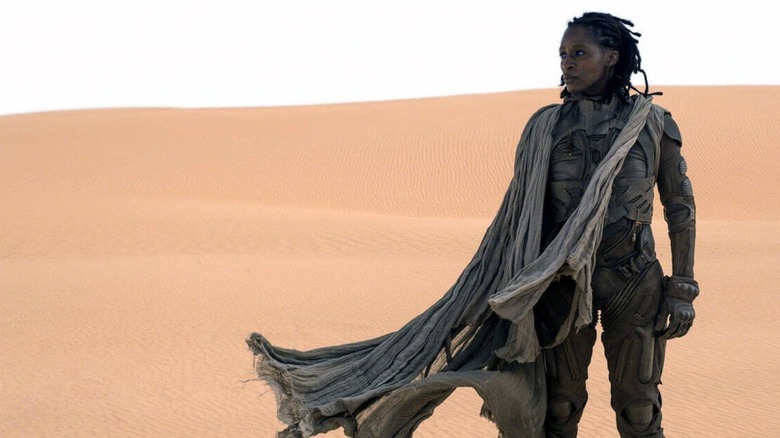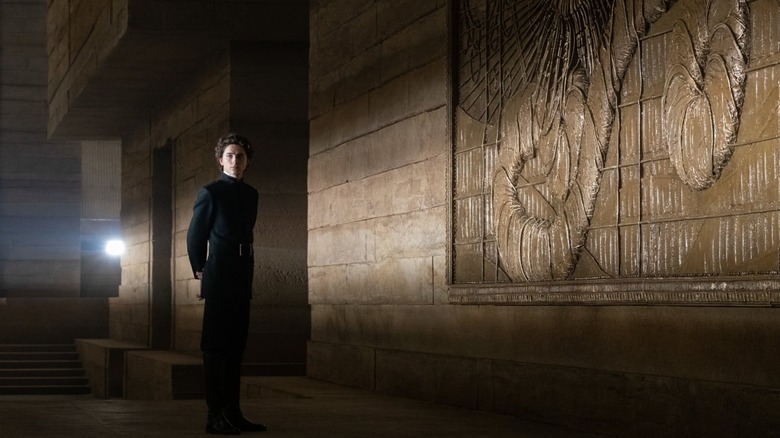
Blue screen and green screen have become such ubiquitous aspects of blockbuster filmmaking that we don't even think twice about it. Back in the days when studios would regularly fly journalists out to visit sets of movies while they were shooting, it was generally expected that one would see a small chunk of existing set to be expanded later where all the massive sheets of green were erected outside or painted on the studio walls.
When it came time to do Denis Villeneuve's "Dune," however, the filmmaker decided to go with a different approach: Fabric. Instead of using endless, lifeless sheets of greenscreen to extend sets where they couldn't afford to build them, Canadian production designer Patrice Vermette ("Arrival," "The Mountain Between Us") told us in our exclusive interview that his crew used fabric painted to mimic the look already established for the sets, similar to a play. Modern day effects software is sophisticated enough to extract these areas and replace them accordingly, and it had the advantage of making the cast feel more within the worlds of Arrakis. Not to mention that post-production would not be beset with the challenge of eliminating lots of reflected green on the actors and floors.
'It Gave The Right Light Environment'

Here is what Patrice Vermette, who is currently hard at work on both "Dune: Part Two" and "Tron 3," had to say about his sure-to-be Oscar-nominated work on "Dune":
For the actor and for Denis and for the crews, they are in the space as opposed to using green screen. So then we, obviously, we had the limitations on some of the sets, not all the sets, but some of the sets we had limitation for the space, because some of them also were just for budgetary reasons. So we had to come up with a couple of tricks, like moving the wall that would create another space. And another trick was to build everything that was higher than 24 and sometimes 30 feet. All out of fabric.
We would continue building the sets in fabric, like fabric on frame, paint them the same color as the average color of the sets. And we use that technique only for what was going on in the city. That technique would dictate where the light would be coming from, and the obstacles that the light would hit. So the sets would be lit, it would help light the set properly to represent what was on the concept part. It also would indicate to the VFX, the areas that needed to be collided with the right texture. Overall, it gave the right light environment, so the VFX part would be integrated better. So, the light is not contaminated by green. It all creates this world, that makes it more real.
I hope it makes sense what I just said. We wanted these worlds to feel old and to feel real. We cracked walls because that's what happens in construction. There are chipped corners, and they have moisture or moss on those walls, growing on those stone walls. Feel the ash. Like, it's old and then maybe it's time to move. So, create that atmosphere.
Read this next: 12 Awesome Sci-Fi Movies That Never Got Sequels
The post Dune Avoided Using Green Screen By Building Sets Out Of Fabric [Exclusive] appeared first on /Film.
0 Commentaires